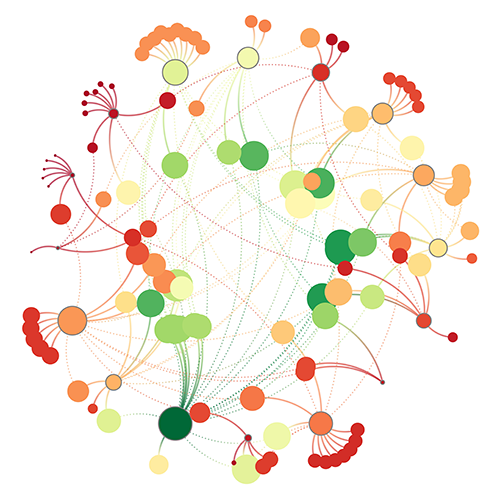Leverage analysis
A method for locating points of influence in systemic design decisions
DOI:
https://doi.org/10.7577/formakademisk.3384Sammendrag
Many systemic design processes include the development and analysis of systems models that represent the issue(s) at hand. In causal loop diagram models, phenomena are graphed as nodes, with connections between them indicating a control relationship. Such models provide mechanisms for stakeholder collaboration, problem finding and generative insight and are powerful . These functions are valued in design thinking, but the potential of these models may yet be unfulfilled. We introduce the notion of “leverage measures” to systemic design, adapting techniques from social network analysis and systems dynamics to uncover key structures, relationships and latent leverage positions of modelled phenomena. We demonstrate their utility in a pilot study. By rethinking the logics of leverage, we make better arguments for change and find the place from which to move the world.

Nedlastinger
Publisert
Hvordan referere
Utgave
Seksjon
Lisens
- Forfatteren(e) beholder sin opphavs- og kopieringsrett til eget manuskript, men gir tidsskriftet varig rett til 1) å fremføre manuskriptet for offentligheten i den opprinnelig publiserte digitale form, og 2) å registreres og siteres som første publisering av manuskriptet.
- Forfatteren må selv forvalte sine økonomiske kopieringsrettigheter overfor eventuell tredjepart.
- Tidsskriftet gir ingen økonomisk eller annen kompensasjon for innsendte bidrag, medmindre det er gjort særskilt avtale om dette med forfatteren(e).
- Tidsskriftet plikter å arkivere manuskriptet (inklusive metadata) i den opprinnelig publiserte digitale form, i minst ett dertil egnet åpent tilgjengelig langtidsarkiv for digitalt materiell, som for eksempel i de norske universitetenes institusjonsarkiv innen rammen av NORA-samarbeidet.
Verket vil bli publisert OpenAccess med en Creative Commons 4.0-lisens som tillater alle å lese, dele og tilpasse innholdet, også kommersielt, under lisensvilkårene:
Dette verket må tilskrives/ krediteres på riktig måte, en lenke må gis til CC-BY 4.0-lisensen, og endringer som er gjort må angis på en rimelig måte, men ikke på noen måte som antyder at lisensgiveren støtter deg eller din bruk.



